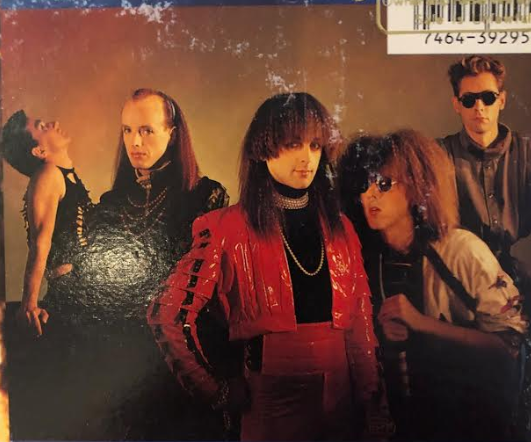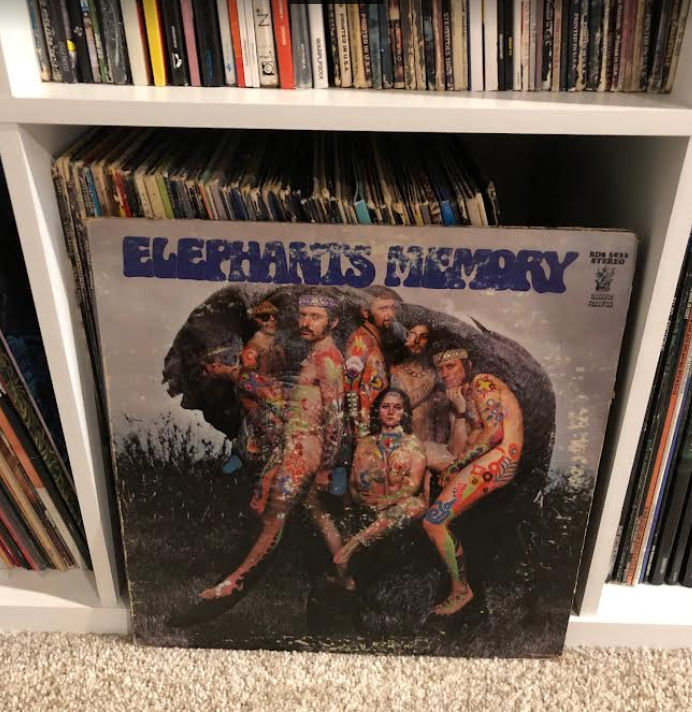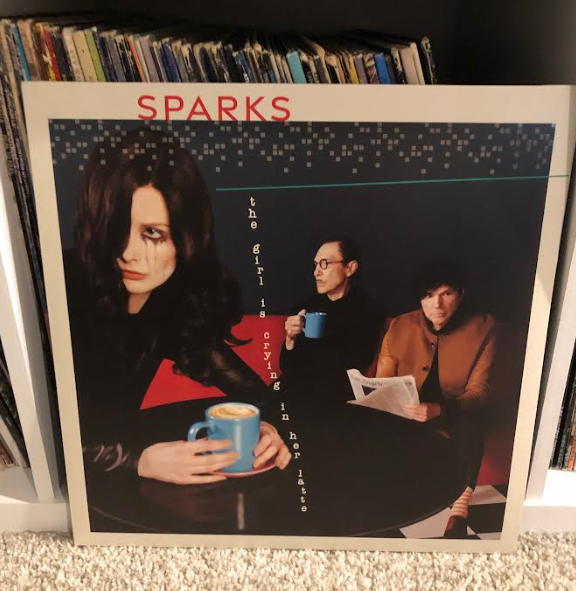 I did the record as an experiment. If the record could be therapeutic if you actually consciously try to make it so. And uh, while it was therapeutic for me creating a texture of sound that was amenable to that idea, after the album came out, some people told me they thought the record actually had therapeutic value. Now I’m wondering whether it was the quality of the music, or because there is some audio suggestion in there, when you call a record, “Healing”. – TR
I did the record as an experiment. If the record could be therapeutic if you actually consciously try to make it so. And uh, while it was therapeutic for me creating a texture of sound that was amenable to that idea, after the album came out, some people told me they thought the record actually had therapeutic value. Now I’m wondering whether it was the quality of the music, or because there is some audio suggestion in there, when you call a record, “Healing”. – TR
I like this quote because it says a lot about Todd, his music, and the way he works. If you know Todd’s discography, “I did the record as an experiment” almost seems redundant, as practically every album Todd does is some sort of experiment. Sometimes it’s about how many genres he can hit on one LP (Runt), or how many studio effects he can use (A Wizard, a True Star), sometimes it’s about replicating his influences (Faithful) or lampooning them (Utopia’s Deface the Music), and sometimes it’s just about how much music he can fit on one side of vinyl (Initiation, Todd Rundgren’s Utopia). More than any song or album, this is what represents Todd – a mega-talented musical polymath with a tendency to get bored and a need to challenge himself.
Even in that context, Healing is an odd departure. Todd’s prog rock leanings or goofball production experiments are not really a surprise, as they tend to highlight the sort of things he’s already good at. But to do an entire album of meditative, Eastern-inspired, heavily electronic music? Not only is it nothing like what Todd’s done in the past (and by 1981, that was pretty much everything), but it’s not the sort of thing that you’d think Todd would do. Though he’s toyed around a lot with synths in the past, he still kept his music mostly organic (“Treatise on Cosmic Fire” excepted), with lots of guitar and a traditional rhythm section. Healing on the other hand has a very different sound – loads of detuned synthesizers, drum machines, and chord progressions that feel downright strange. It’s as if he’s trying to imitate something, but it’s never quite clear what. He’s using drum machines in a way that almost no one else was back then; not as a substitute for actual drums but as an opportunity to do something totally different. Most of “Shine” features a brisk, galloping beat that feels like fist-pumping house music from 15 years in the future, while the hollowed out, mechanical skittering on “Flesh” almost seems to presage IDM in a way. Even the requisite Gilbert & Sullivan tribute “Golden Goose” feels off, with some odd melodies and a bunch of triumphant synth lines reminiscent of Commander Keen. And that imitation quacking sound at the end is the stuff of nightmares.
There’s a theme running through most of side one (“Goose” excepted) of healing through self-introspection and meditation (sample lyric: “If you will/then you will/for nothing can withstand your will/as your faith is so you are/where your mind is there you are/just as action follows thought/you can be whole again”). I mean if Initiation had “Eastern Intrigue”, this is diving into it face first. Part of that is adapting a more minimal approach to songwriting, learning to jettison some elements and not overstuff everything with new hooks and little detours. These songs have rhythms alright, but they’re often underdeveloped – there’s not really anything here you could dance to, and in many cases the drum machine patterns sound downright wrong for the song in question. It almost seems to break down the concept of rhythm itself; many bands at this time were augmenting their drummer with machines, but the drum machine was never the actual rhythm – here it’s as if the actual drum part was deleted, leaving just the backing track; like a rough sketch for the drummer, “play something like this”.
One of the benefits of this is it gives Todd a chance to air his voice out – songs like “Healer”, “Flesh”, and “Shine” have some of his most adventerous vocal arrangements yet, constantly bumping up against both ends of his range. Now 32 years old, feeling the cumulative effects of recording something like 20 LPs worth of material and maintaining a near-constant touring schedule (not to mention his other studio work), you can see why he felt the need to slow things down and get introspective. For the first time since The Ballad of Todd Rundgren it feels like he’s being sincere and opening up, going on the sort of long spiritual head-trip that previous albums only hinted at.
At the center of this all is the three part title track that takes up all of side two. Todd’s no stranger to the sidelong but he’s never done one quite like this – previous attempts like “Treatise on Cosmic Fire”, “The Ikon” and “Singring and the Glass Guitar” all felt segmented, as though they were built up piece by piece, with several sections that frankly didn’t have a lot to do with one another. “Healing” on the other hand is very much just one long piece; like most great sidelongs it feels much shorter than its actual length. The central theme that pops up on Parts 1 and 3 is as good a soul ballad as Todd’s ever written, while the ambient, nearly formless second part is simply gorgeous, especially considering it’s a reflection on his own mortality. It’s much more repetitive than anything he’s worked on thus far, giving him a chance to explore and really let things simmer – the scat singing at the end is a great moment, as is the slow layering of synthesizers on Part 2. It is such a breeze that you can even put it on repeat, something you can’t really say about any of his other compositions (many of which are great but exhausting).
Ultimately, Healing stands out because it feel so emotionally and compositionally bare; this is not to say the music is simple or undeveloped, but it tends to build within itself rather than spiral off every which way. All too often Todd comes off as the sort of guy who knows what his audience wants but refuses to give it to them – there’s almost a sort of Zappa-ish streak to him sometimes, as even his pop albums seem to exist to mock the audience that only wants to hear “I Saw The Light” and “Hello It’s Me”. Granted he had dialed down that aspect of his personality the past few years, what with Utopia turning New Wave and his 1978 effort The Hermit of Mink Hollow consisting mostly of straight-up pop songs. But it was not to last; he described his next release as an “if you don’t care, I don’t care album”, and the following one was A Capella, which was exactly that. I mean, Rundgren’s post-70’s discography is pretty damn strange for a guy considered a major star in his day; he did score another hit, but the caveat is that almost nobody knew it was actually him (“Bang on the Drum All Day”). In 2000, he recorded a song called “I Hate My Frickin’ ISP”, a fact which amuses me to this very day. Really I think more of the rock star generation of the late 60’s and early 70’s could use an attitude like this. Say what you will about ol’ Todd but you certainly can’t accuse him of chasing old glory.
Still, even Todd isn’t above that from time to time, and in 2010 he did a tour where he played “full album shows”, doing both A Wizard, A True Star, and Healing in their entirety. Wizard, of course, is generally considered his best album, so that does say a lot about Healing. With such fake-sounding drums and blocky synths there’s definitely a dated element to this, but these sounds are driven so close to the front that it gives it an alien, utterly unique sound. I mean, a lot of artists were certainly using those sounds in the early 80’s, but there aren’t a lot of producers willing to just leave ’em all as-is like this. That’s the beauty about having an all-in-one writer, performer, arranger, producer, and engineer – strange choices are bound to be made, and while a lot of times that doesn’t pay off, sometimes you wind up with something that nobody else could’ve made. Healing is certainly an album like that; an ambient album from a dude who can’t sit still, an electronic album made before the book on electronic music had been written.



Leave a comment